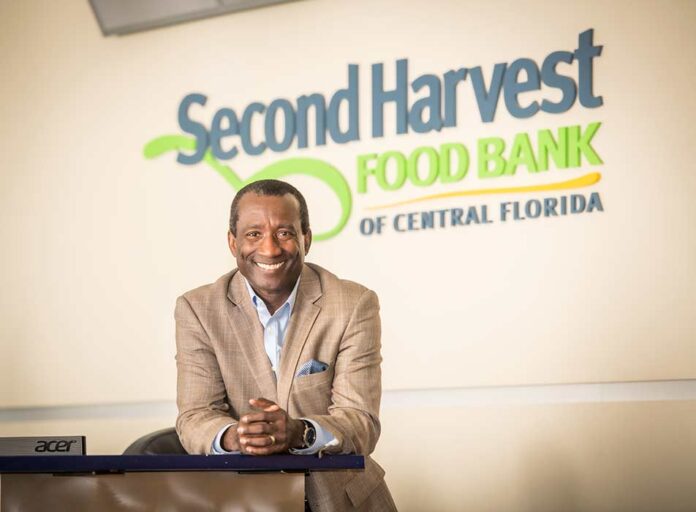By Derrick Chubbs
“Rent eats first.” Those three words, shared matter-of-factly by a neighbor as she sought food assistance at a local distribution, have stayed in my mind since I first heard them. They describe a dilemma – and silent crisis – many families are struggling with right now in Central Florida and beyond.
Hunger is real. It is urgent. And many people have no choice but to face it alone.
That’s part of the message I recently brought to Washington, D.C., after being invited to participate in a Fed Listens panel. The Board of Governors of the Federal Reserve asked for an update on food insecurity. While I’m sure they hoped to hear things had improved in the past two years, I was there to tell them the opposite.
While other metrics show Florida is getting “back to normal” from a business standpoint, statistics on hunger are grim. Second Harvest and its network of more than 750 community feeding partners are distributing approximately 300,000 meals every day to help feed families – and sadly, it still falls short of meeting the need.
Inflation has slowed, but the increased prices for necessities like groceries and housing aren’t returning to their pre-pandemic levels. Wages haven’t kept up, and with credit card interest rates on the rise, neighbors who resort to debt to cover costs will face a steeper climb back to stability.
Inflexible costs – housing, insurance payments, utilities, essential medications, and so on – consume an increasingly large share of many Floridians’ paychecks. Sometimes, there is enough left over for groceries. However, when unexpected expenses eat up the remainder, many households turn to their personal networks or the community for help with food.
At the same time, nonprofits like Second Harvest are also facing the brunt of higher costs. Each dollar in our budget needs to stretch further to balance the costs of transportation, storage, and staffing – because if we run out of resources, that would mean turning away families who look to Second Harvest for help – and we cannot let that happen.
Hunger impacts people of all ages and backgrounds, in all neighborhoods and communities. At Second Harvest, we see the real faces of hunger every day: Homeowners struggling with insurance and mortgage payments. College students working to cover loans and tuition. Moms and dads strive to provide a better future for their kids. Caregivers supporting their parents in old age. And a staggering one in five children, many of whom rely on free and reduced-price school breakfasts and lunches to get enough to eat.






